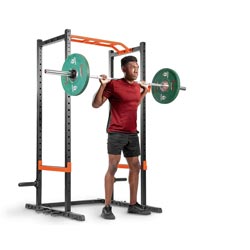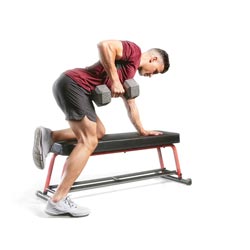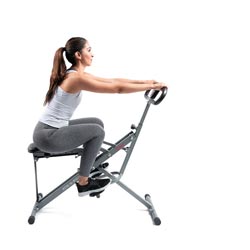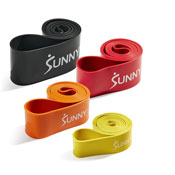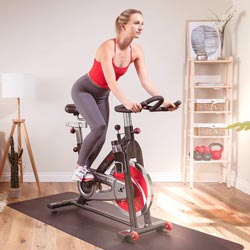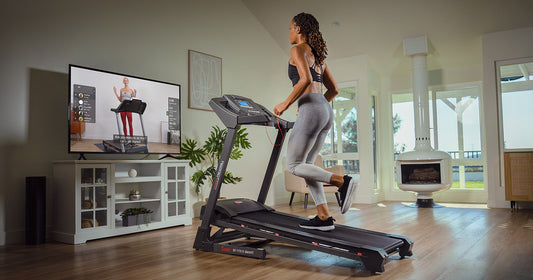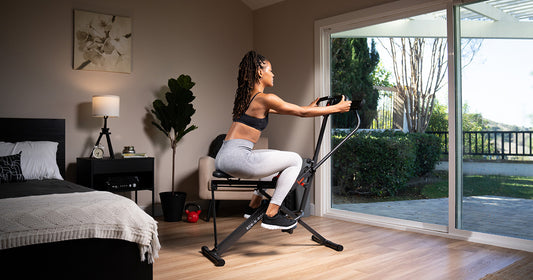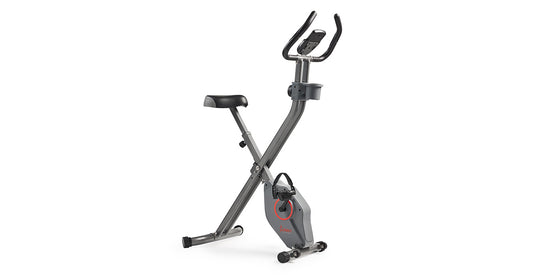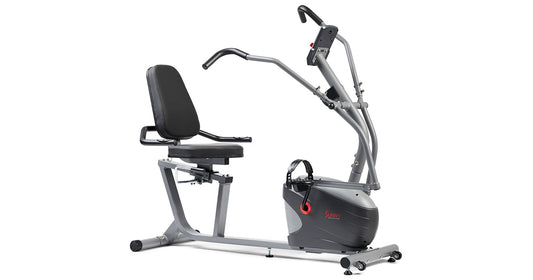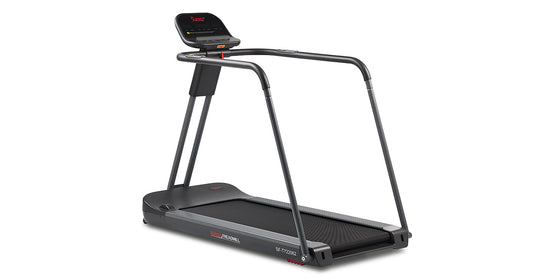If you’ve looked at indoor cycle bikes, you’ve likely seen varying flywheel weights and sizes. Some wheels are heavy and reach upwards of 40 pounds. Other flywheels are much lighter, maxing out around 8 pounds. While there might be stark differences in size, there is very little difference in functionality. Regardless of the flywheel weight, you can still achieve a calorie burning and cardiovascular boosting workout. You will find the flywheel positioned on either the front or back of an exercise bike.
How Does a Flywheel Work?
As you pedal, the drive system connected to the sprockets create movement of the flywheel. While traditional design of outdoor bikes is to have the drive system create movement of the rear wheel, most cycle bikes will have a drive system that moves a flywheel mounted in the front.
The positioning of the flywheel and the flywheel weight play a role in the performance and stability of the cycling bike. As you pedal the flywheel builds momentum. The flywheel weight will determine how long the flywheel will hold its momentum. If there is a resistance pad or magnets acting on the flywheel then the momentum will be more limited. If the flywheel weight is lighter, it will be easier to stop the bike, but it will not hold its momentum as long when resistance is applied to it during a workout.
Bigger Isn’t Better?
Flywheel weight does have some effect on performance. We’ve seen in basic physics that it takes more energy to get a heavier object moving, compared to lighter objects. Upon the first pedaling stroke, you’ll expend more energy getting the flywheel in motion on an indoor cycling bike. But once the flywheel is in motion, it’s all about keeping up the speed and momentum.
This is like the function of an outdoor bike. A bicycle is rarely quick to start; it takes a lot of pedaling force to get it up to full speed. And when it is up to speed, the momentum created by pedaling will keep the bike moving. Depending on the resistance system that is used, some bikes with heavier flywheel weights may provide heavier resistance that can better mimic the intensity of a hill climb on an outdoor bike.
Some indoor cyclists prefer exercise bikes with heavy flywheel weights. Larger flywheels can sometimes better simulate outdoor bikes and can often make pedaling a smoother experience. You can find larger flywheels in cycle bikes such as our best-selling SF-B901 Indoor Cycling Bike.
If you’re not looking for a bike that simulates the hard-to-start experience, consider getting a cycle bike with a flywheel weight that is lighter. These bikes make getting up to speed and starting your workout easier. Indoor cyclists that are looking to jump straight into action may enjoy lighter flywheel weights. We’ve designed slim and sleek performance bikes with lighter flywheels, such as our SF-B1709 Magnetic Indoor Cycling Bike.
Which One Burns The Most Calories?
While more flywheel weight requires more energy to get moving, that experience has little to do with how many calories you can burn. For the most part, you’ll exert the most energy maintaining a set speed with applied resistance. The more resistance forced on your flywheel, the harder you will need to work to keep it moving, which will increase the number of calories you will burn.
Not all resistance is the same. You’ll find bikes with contact resistance, such as felt and leather brake pads, and magnetic resistance.
So, Which One Should I Buy?
Always remember, the best exercise equipment is the one that gets you moving every day. So, find a bike that fits your budget and your home gym space. Flywheel weights that are heavier can be ideal for individuals that prefer the feel of an outdoor bicycle. Flywheel weights that are lighter are great for the rider that’s ready to jump into action. Remember, workout intensity is less about flywheel weight and more about applied resistance.
Another thing to keep in mind is that if you purchase a bike that has a higher flywheel weight, is that you may end up paying a bit more because of the increased materials used to make the flywheel. They may also be more difficult to move since the bike will be heavier. Indoor cycle bikes with heavier flywheel weight can also provide a more stable riding experience for users who are able to produce higher amounts of power at a faster cadence.
We’re constantly updating our social feeds with new fitness content. You’ll find informative videos, fun pictures, and updates on our newest articles. Like us on Facebook, follow us on Instagram, retweet us on Twitter and pin us on Pinterest!


